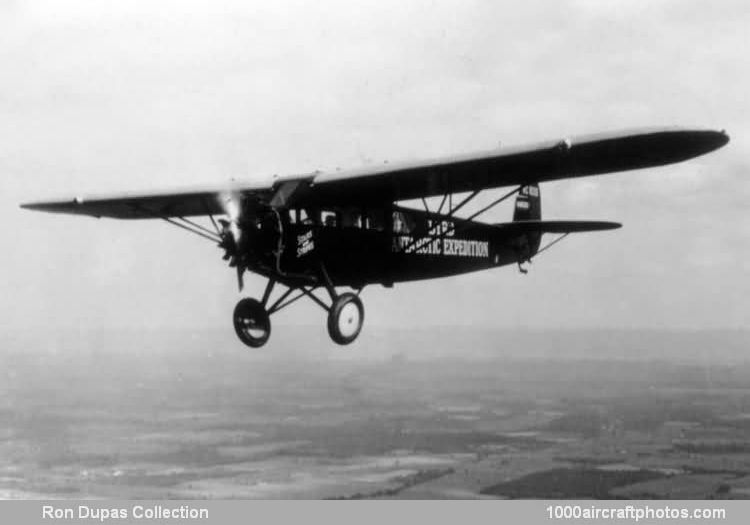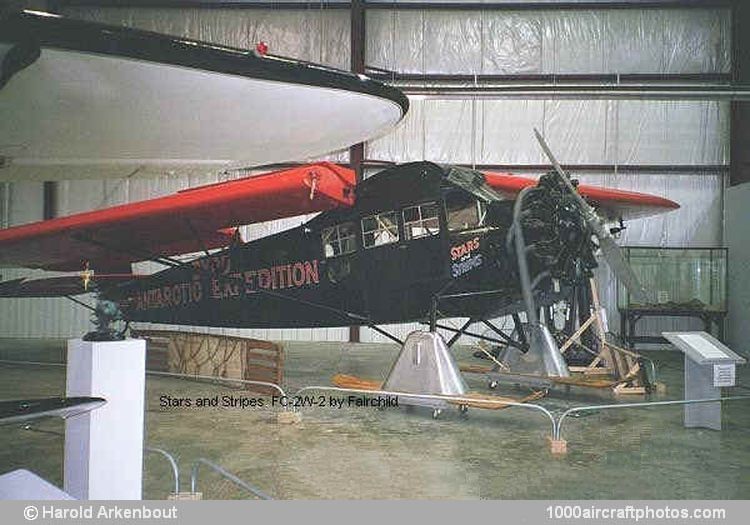06/30/2015. Remarks by Johan Visschedijk: "This aircraft was the first to fly on the Antarctic continent on January 15, 1929. One of three aircraft with the Byrd Antarctic Expedition, the FC-2W2 was to be used primarily as a photo reconnaissance aircraft. Commander Richard Evelyn Byrd, head of the expedition, had specified much of the special equipment required for the mission, and the aircraft - the 140th off the line - was largely made-to-order. Among other things, it was equipped to have a cruising range of 1,600 mls (2,575 km) and carried a considerable amount of radio equipment, in addition to the Fairchild photo mapping cameras.
Besides making the first flight on the continent, the Stars and Stripes performed yeoman service for the expedition, carrying Commander Byrd over hundreds of miles of territory never before seen by man, establishing records for airborne communication (in one case a two-way conversation between Antarctica and New York), rescuing marooned members of the expedition (including on one occasion Commander Byrd himself).
When the Byrd Expedition retumed to the United States in January 1930, the Stars and Stripes was left in Antarctica, its wings folded and wheels chocked with blocks of ice to hold it in place. Four years later, the second Byrd Expedition found it entombed in ice, dug it out, recovered the wing, and again used it for photo mapping flights over the icy continent from December 1934 to early 1935. In all, the Stars and Stripes logged 146 hours in Antarctica with the first expedition and 41 with the second.
The Stars and Stripes did not end its service with the Antarctic expeditions, but went on to live a long and checkered life. Damaged during the transport back to the USA, the aircraft was sold to barnstormer Alton Walker, who had it repaired by Fairchild in 1935. After logging 304 hours Walker offered the aircraft to the Smithsonian, which declined, whereafter it was sold to Fairchild Aerial Surveys of Los Angeles. Again the aircraft performed in its initial role of aerial photography platform and flew 1,534 hours in the USA and Guatemala. Retired in 1942 it was cannibalized and its remains and two other aircraft were sold to Red Jensen in California in 1954.
In 1957, Fairchild Aircraft in Hagerstown, Maryland, purchased parts back, including a fuselage, wings, tail and landing gear assemblies, with the intention to restore the Stars and Stripes. Unfortunately this plan fell through and the deplorable remains were obtained by the Smithsonian in 1961. Over two decades later, the Cradle of Aviation Museum at Garden City, New York, started restoring the aircraft in 1981.

